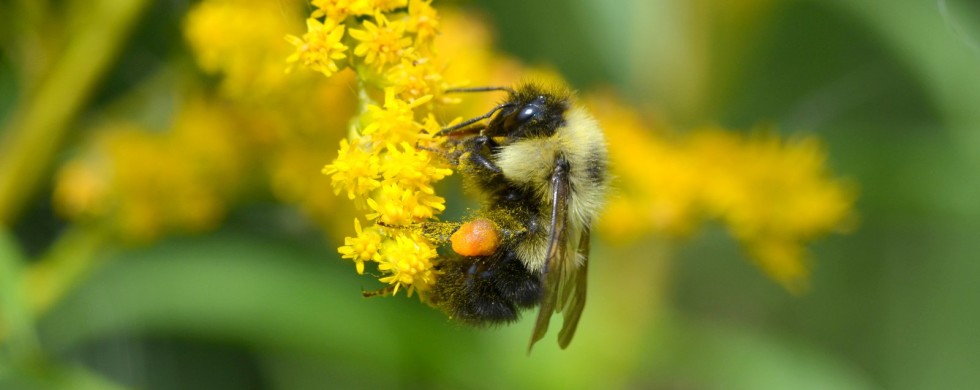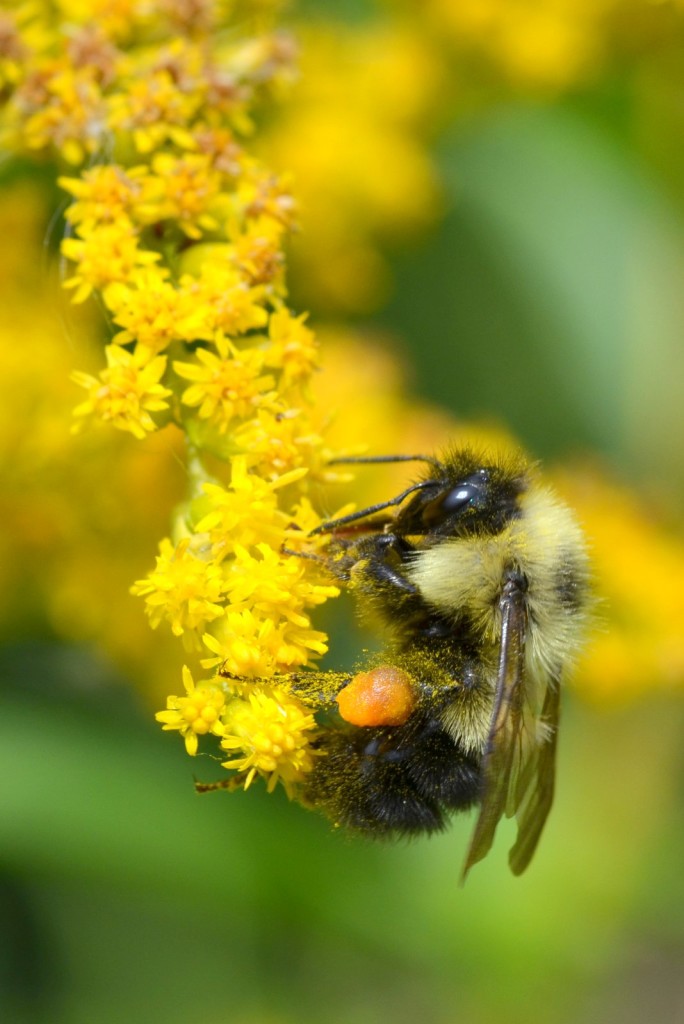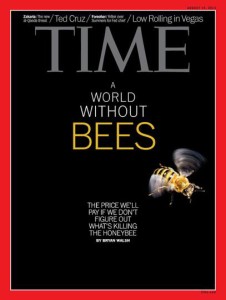
30
2015To Bee or Not To Be
Shot of the Month – September 2015
I have taken liberty with what is perhaps Shakespeare’s most famous line to highlight the plight of one of humanity’s oldest partners — da bee. A recent study indicates that humans have benefited from the bee’s labor for at least 8,000 years. However, since 2006 or so bee populations have been crashing (Colony-Collapse Disorder (CCD) is the scientific lingo for it) around the planet and this beautiful relationship is in serious peril.
Why should we care?
Well, bees are expert pollinators and we rely on them to produce much of our food — some estimate that 1 in every 3 mouthfuls of the food you ate today was pollinated by a bee. Of the 100 crops that provide about 90% of the food eaten in 146 countries, 71% are bee-pollinated. Did you know that the ENTIRE almond crop in the US relies on bees for pollination? Me neither.
Without bees forget about apples, lemons, limes, carrots, celery, zucchini, oranges, blueberries, cherries, watermelons, grapefruit, lettuce, macadamia, cashew, coriander, cucumber, buckwheat, mango, avocado, apricot, peach, pear, raspberry, broccoli, onion…and many more. See a comprehensive list here.
Much of the pollinating is done by the Western Honey bee — a species that is commonly used by commercial beekeepers. Typically a beekeeper will lose about 10-15% of his bees over the winter. Since 2006 the loss rate has been around 30%. In 2014-2015 about 42% of all honey bee colonies died off.
So what is causing all the deaths? There is no single answer but most scientists believe the mass die-off is being caused by:
- Habitat Loss: Modern agriculture is characterized by massive fields with just one crop – rarely can you find a range of flowers along fields where bees can forage. These fields are like deserts for bees.
- Pesticides: Bees are very sensitive to pesticides and seem particularly sensitive to neonicotinoid pesticides. Neonicotinoids were introduced in the mid-1990s and bee numbers began falling soon after. Over 50,000 bumble bees (like the one I photographed here) died in Oregon in 2013 after a landscaping company sprayed nearby trees. Oregon banned the use of this insecticide in 2015.
- Parasites: A microscopic mite, the Varroa destructor, surfaced in the US in 1987 and has since killed millions of bees.
How can you help? A few ideas:
- Buy Organic: Organic farms don’t use pesticides.
- Buy Local: Support your local farms, especially local organic farms (see #1 above)
- Use less pesticides: We use WAY too much pesticides. Most pest problems can be solved without pesticides.
- Plant bee-friendly plants: Start a garden and provide desperately needed food for the bees. Here is some guidance on how to start. And check out this fun tool.
And here is a good list of ideas on how to help.
A world without bees would be terribly unbeecoming and a lot less beeautiful, and dining would be a lot more boring (damn, no “ee’s” in boring, sigh).
Anyways, we really do need bees to be, so do what you can to help out.
Until next month….:-)
Nikon D5100, VR Micro-Nikkor 105mm f/2.8, f/10, 1/250 sec, ISO 200


